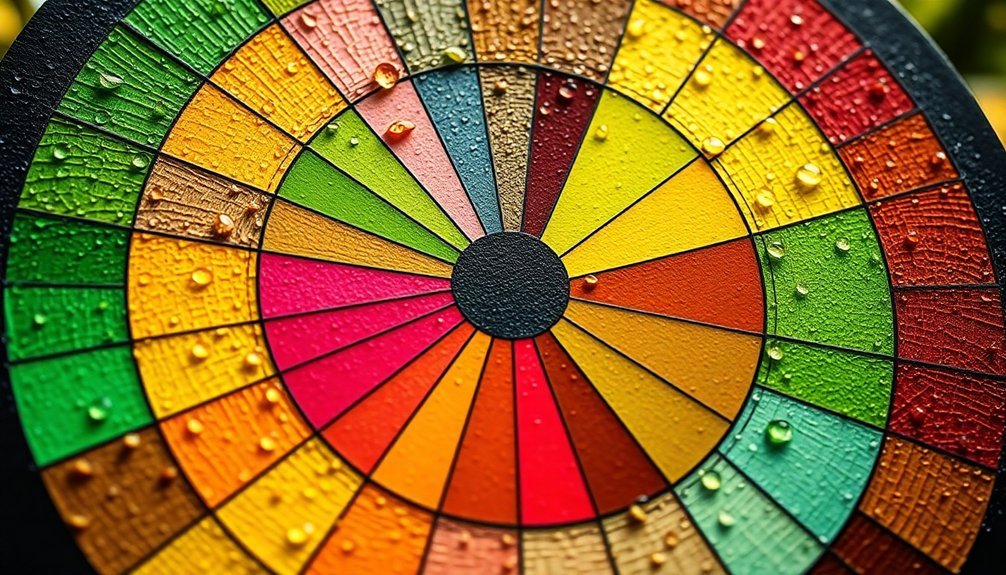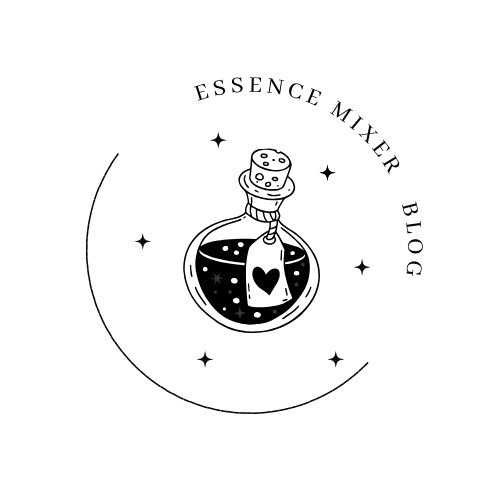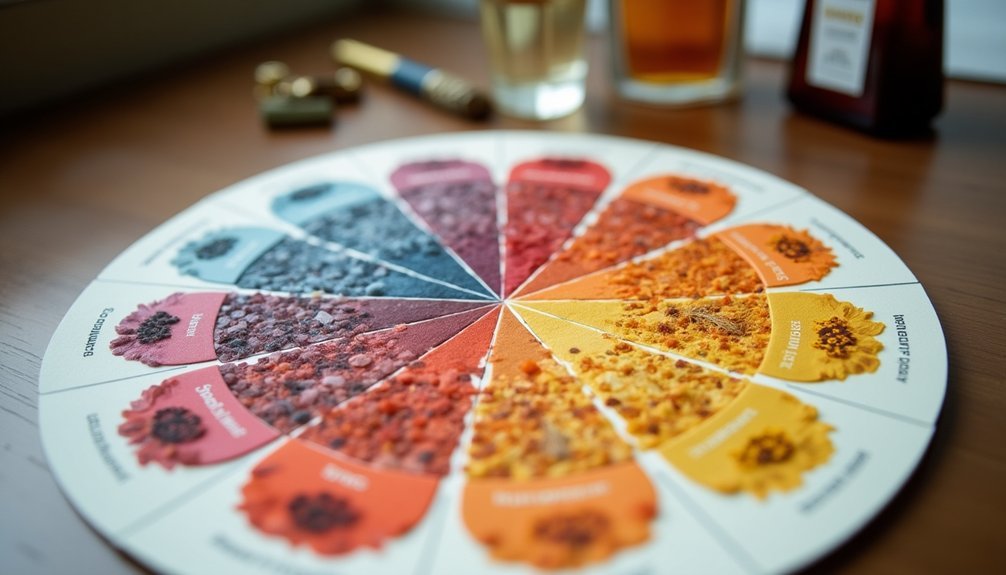Three essential scent wheel charts will elevate your perfumery skills: the Classic Michael Edwards Fragrance Wheel organizes scents into four main families, the Advanced Perfumer's Scent Blending Chart reveals sophisticated combinations for unique creations, and the Natural Essentials Classification Wheel maps essential oils for organic blends. You'll find these visual tools invaluable for understanding scent relationships and crafting balanced fragrances. Discover how these powerful resources can transform your perfume-making journey.
The Classic Michael Edwards Fragrance Wheel

Since its introduction in 1992, the Classic Michael Edwards Fragrance Wheel has revolutionized how perfumers classify and understand scents. This innovative scent wheel organizes fragrances into four main families: Floral, Amber, Woody, and Fresh, with each category containing distinct subfamilies that share similar olfactory characteristics.
You'll find the wheel's circular design particularly useful for identifying relationships between different fragrance families, making it easier to understand scent compatibility and blending possibilities.
For over three decades, perfumers have relied on this visual tool to efficiently recommend perfumes by grouping similar scents together. Whether you're creating new fragrances or selecting the perfect scent, the wheel's systematic organization helps you navigate the complex world of perfumery while understanding how different scents relate to and complement each other.
The Advanced Perfumer's Scent Blending Chart
While the Classic Edwards Wheel provides a foundation for fragrance classification, the Advanced Perfumer's Scent Blending Chart takes scent analysis to a more sophisticated level.
You'll find this chart organizes fragrance families – Floral, Woody, Oriental, and Fresh – into detailed subfamilies that make creating balanced blends more intuitive.
When you're working with the chart, you'll discover it's designed to help you identify both kindred and complementary notes.
The visual layout, often presented as a scent wheel, lets you quickly spot potential combinations that'll work harmoniously together.
You can use these blending strategies to craft unique fragrances that meet specific preferences and market demands.
The chart's extensive organization of fragrance families and their relationships makes it an invaluable tool for innovative perfume creation.
The Natural Essentials Classification Wheel

Nature's blueprint comes alive in the Natural Essentials Classification Wheel, a sophisticated tool that maps essential oils and natural aromatic compounds by their olfactory characteristics.
As a perfumer, you'll find distinct segments like floral, citrus, herbal, woody, and spicy notes organized on this fragrance wheel, making it easier to identify complementary scents for your creations.
This scent families classification system emphasizes natural ingredients, aligning with today's trend toward organic and sustainable fragrances.
You'll discover a thorough array of essential oils within each category, helping you understand their unique profiles and potential applications.
The wheel's innovative design enables you to create balanced, harmonious blends by visualizing relationships between different aromatic compounds.
It's an indispensable reference that'll enhance your ability to craft innovative fragrances with natural authenticity.
Frequently Asked Questions
What Is the 30 50 20 Rule for Perfume?
You'll want to blend your perfume using 30% top notes for initial impact, 50% middle notes for balanced heart, and 20% base notes for lasting foundation. This rule creates a well-structured fragrance.
How to Read a Fragrance Wheel?
Start at the outer circle to identify the main scent family (Floral, Amber, Woody, or Fresh). You'll find subfamilies within, and nearby scents blend well together, while opposite ones create interesting contrasts.
What Are the 4 Categories of Fragrance?
You'll find four main fragrance categories in perfumery: Floral with sweet flowery notes, Amber (Oriental) with warm spicy scents, Woody featuring rich timber aromas, and Fresh containing vibrant citrus and aquatic elements.
How to Know What Scents Go Together?
You'll find harmonious scent combinations by pairing adjacent notes on the fragrance wheel, matching complementary scents across from each other, or creating triangular blends. Test combinations on your skin for the best results.
In Summary
You'll find these three scent wheels invaluable as you develop your perfumery skills. The Edwards Wheel serves as your foundation, while the Blending Chart helps you create sophisticated combinations. For natural perfumers, the Essentials Classification Wheel guides your botanical choices. Keep these charts handy – they'll transform how you understand and work with fragrances, making your perfume creation process more intuitive and successful.





Leave a Reply